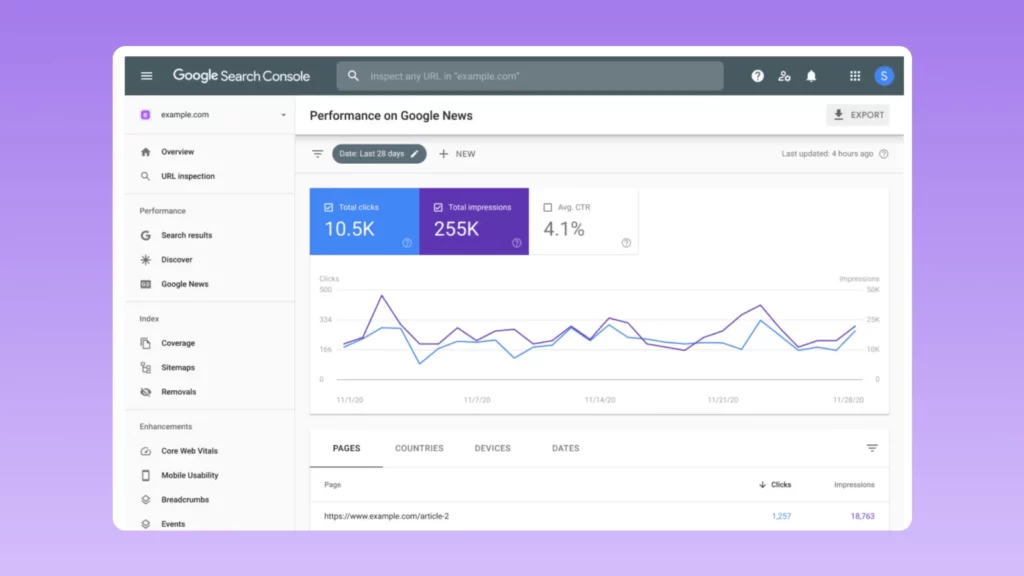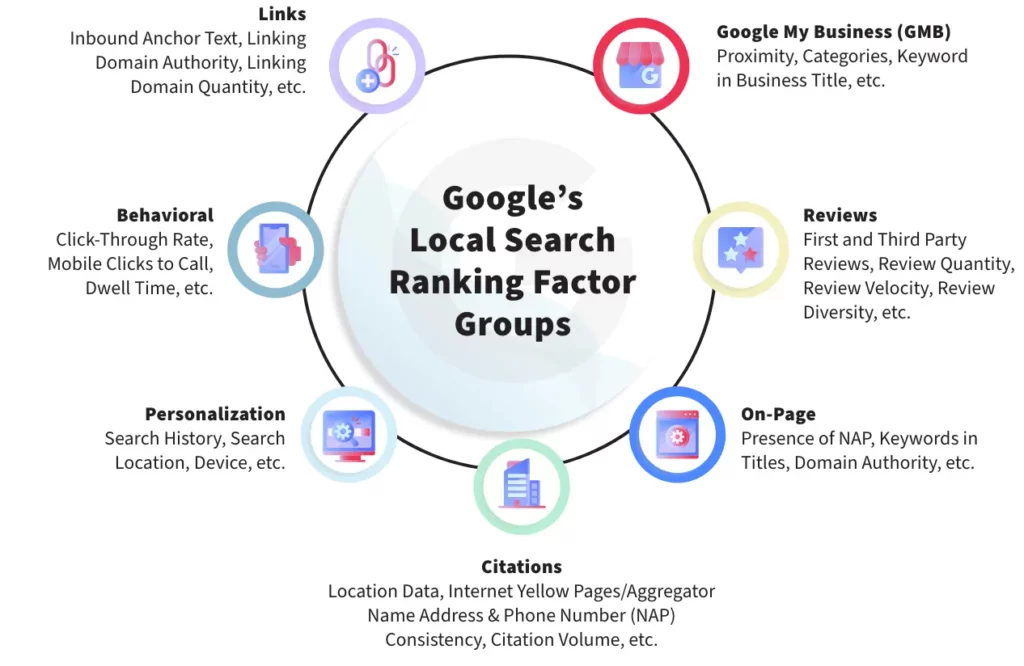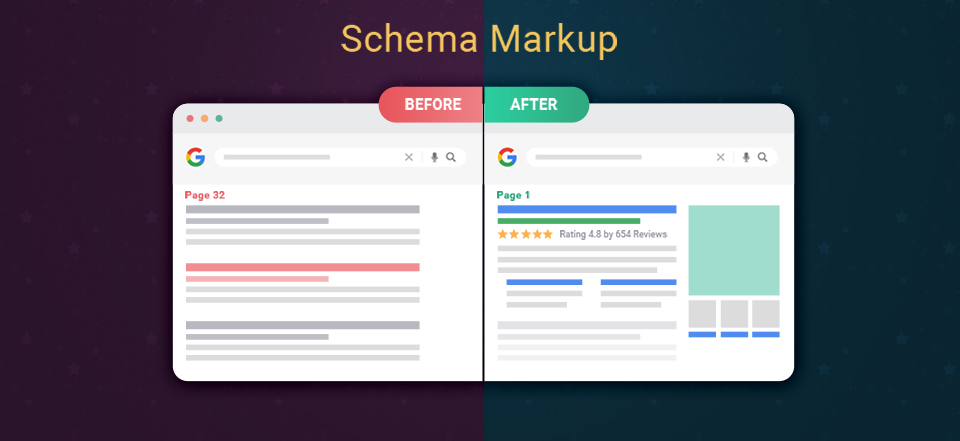Why isn’t my website ranking? We would be filthy rich if we were given £1 every time a client asked us why their new website isn’t appearing on Google a day after it goes live. However, we recognise that understanding Google’s algorithm and how to get a website to rank on the first page can be as difficult as rocket science for many people.
The success of a new website is influenced by various factors, one of which is its visibility on search engines such as Google. Sadly, a lot of new websites have a hard time ranking on Google, which results in low traffic and poor visibility.
Let’s simplify it for you…
On Page SEO
On-page SEO is the practice of improving individual web pages to achieve a higher ranking and attract more relevant traffic from search engines. This involves activities such as researching and optimising for relevant keywords, ensuring high-quality and relevant content, as well as organising and structuring the website effectively.
1. Keyword Research and Optimisation
Keyword research is a fundamental aspect of building a successful website and is an essential component of on-page SEO. It enables you to determine which keywords are applicable to your website and target audience, as well as the level of difficulty in ranking for those keywords. After conducting your keyword research, the next step is to optimize your website’s content for the identified keywords.
How Can You Conduct Keyword Research And Optimisation?
- Determine your target audience: Identify your ideal audience and their needs. This will help you determine what keywords they are likely to search for. Put yourself in their shoes and determine what they are searching for.
- Conduct keyword research: Use keyword research tools such as Google Keyword Planner, SEMrush, or Ahrefs to find keywords that are relevant to your business or industry. Look for keywords with high search volume and low competition. You can find more information on this topic in this article that provides a detailed overview of the keyword research process.
- Create a list of keywords: Create a list of relevant keywords along with their search volume and level of competition. This will help you prioritise which keywords to target first.
- Optimise your website’s content: Incorporate your keywords into your website’s content, including your page titles, headers, and body content. Ensure that you use your keywords naturally and avoid keyword stuffing as it can have a negative impact on your search engine rankings.
- Monitor your rankings: Use tools like Google Search Console or Ahrefs to track your website’s rankings for your targeted keywords. Make adjustments to your website as needed to improve your rankings over time.

2. Content Quality and Relevance
After optimising your website for keywords and ensuring that your content is abundant with appropriate keywords, it is important to also take into account the quality and relevance of your content.
What Are The Ways To Ensure Content Quality And Relevance?
- To ensure content quality and relevance, start by conducting user research: Get to know your audience, ask them questions, and find out what they are looking for on your website and in your content. Make sure that your content is relevant to your audience and uses keywords and phrases that they are searching for.
- Check the readability of your content: It should flow well and be easy to read. Ask colleagues or friends to review your content and check for grammar and punctuation errors. Having multiple sets of eyes can help to proofread and improve written content.
- Pay attention to the structure of your content: Use a clear and logical structure with headings, subheadings, and a conclusion. This will make your content easy to navigate and more appealing to your audience.
- Stay up to date by regularly updating your website with fresh and relevant content: Don’t be afraid to add or remove content based on user feedback and metrics. This will help to keep your content relevant and engaging for your audience.
Poor quality content is one of the most frequent causes of new websites not ranking on Google. Google’s algorithm aims to promote valuable and high-quality content, while penalising thin and low-quality content. As a result, if your website has content that is irrelevant, uninformative, or unengaging, it is unlikely to rank well on Google.
By following the steps mentioned above to ensure the quality of your content, you can increase the likelihood of your website ranking well on Google.
3. Website Structure and Organisation
The way in which your website is structured and organised is also essential to its ranking.
What Should I Look For To Enhance The Structure And Organisation Of My Website?
- To ensure that search engines and users can easily understand the content on your website, it is important to have a clear and consistent structure. This can be achieved by having a logical hierarchy of pages and a clear navigation system.
- To further improve the structure of your content, use header tags such as H1, H2, H3, etc., to help users scan and understand your content. H1 tags should be used for main headings, while H2, H3, etc., can be used for subheadings.
- Additionally, optimise your URL structure by using descriptive, concise, and keyword-rich URLs for each page on your website. This helps search engines and users understand what each page is about.
- Optimising your images is also important. Use descriptive and keyword-rich file names for your images, and add alt text to describe their content. This helps search engines understand the content of your images and improves accessibility for visually impaired users.
- Ensuring that your website design is mobile-friendly is essential. Use a responsive UI/UX design that adjusts to different screen sizes, as Google now prioritises mobile-friendly websites in its search results.

- Use internal linking to connect related pages on your website and help users navigate to the content they are looking for. This also helps distribute page authority and link equity within your website.
- Finally, avoid broken links by checking for and fixing any on your website. This improves user experience and can also improve your search engine ranking.
Off-page SEO
Off-page SEO involves optimising factors outside of your website that can affect your website’s ranking. These factors include creating high-quality backlinks, building a strong social media presence, engaging with your audience, and optimising for local SEO.
1. Building High Quality Backlinks
Firstly, building high-quality backlinks is essential for improving your website’s ranking on Google. Backlinks are links from other websites to your website, and their quality is more crucial than their quantity. Therefore, it’s crucial to concentrate on creating relevant and high-quality backlinks from reputable websites.
How Can I Build High Quality Backlinks?
- Create valuable and shareable content that serves a purpose and provides value to your audience.
- Reach out to websites in your industry and ask them to link to your content. Be sure to personalize your email and explain why their audience would find your content valuable.
- Participate in online communities related to your industry and add value to discussions. When appropriate, include a link to your website.
- Monitor your backlinks using tools like Ahrefs or SEMrush to keep track of new links and identify opportunities to build new links.
- Avoid participating in link schemes or other unethical tactics to build backlinks. Google can penalise websites that engage in these practices, so focus on building high-quality, natural backlinks.

2. Social Media Engagement
Having a strong social media presence and engaging with your audience can have an impact on your website’s ranking in Google. By being active on social media, you can develop a positive online reputation, connect with your intended audience, and increase traffic to your website.
To establish a solid social media presence, it is essential to consistently post high-quality and relevant content, as well as respond to comments and questions from your followers. Social media algorithms have advanced to the point where they prioritise valuable content, so ensure that each post you share provides value to your audience.
Furthermore, social media can be used to obtain backlinks to your website. By sharing your content and encouraging others to do the same, you can drive traffic and users to your website.
3. Local SEO
It is essential to prioritise local SEO optimisation if your business serves a local area or has a physical location. Despite our reliance on the digital world, many people neglect this crucial step. However, catering to your local customers should be a top priority for any business.
How To Optimise My Website For Local SEO?
- Claim your Google My Business listing: This free tool allows businesses to manage their online presence across Google, including search and maps. By claiming and verifying your listing, you can take an important step in improving your local SEO.
- Optimise your website for local keywords: Ensure that your website’s content and meta tags contain relevant local keywords, such as your city and state name.
- Get listed in local directories: Being listed in local directories like Yelp, Yell, and TripAdvisor can establish your business as a credible and trustworthy source of information, positively impacting your local search ranking.
- Encourage customer reviews: Ask your customers to leave reviews on your Google My Business listing, as well as other review sites like Yelp and TripAdvisor. Positive reviews can help improve your local search ranking and build trust with potential customers.
- Use schema markup: Adding schema markup for local businesses to your website’s code helps search engines understand important information such as your business location and phone number.
- Get listed in local news sources: If your business is mentioned in local news sources, ensure that they link back to your website. These high-quality, local links can help improve your local search ranking.
- Monitor your local search ranking: Use tools like Google Search Console or SEMrush to monitor your local search ranking and track your website’s performance in local search results. This can help you identify opportunities for improvement and make changes that positively impact your local SEO.

Technical SEO
Let’s dive into the technical side of things, but don’t worry, it’s not as complex as it may sound.
Technical SEO involves optimising your website’s technical elements to boost its ranking on Google. This includes improving website speed and mobile-friendliness, optimising crawling and indexing, and implementing schema markup and structured data.
1. Website Speed and Mobile Optimisation
How often have you abandoned a website because it took too long to load? Nowadays, people don’t have the patience to wait, so it’s crucial to avoid falling into this pitfall. A slow-loading or non-mobile-optimised website can hurt your website’s ranking and user experience.
To enhance your website’s speed and mobile-friendliness, implement a responsive design, limit the usage of large images and videos, and optimise your website for fast loading times. You can compress images using tools like Squoosh to reduce their file size and save space.
2. Crawling and Indexing
Crawling and indexing are the methods search engines use to find and organise the content on your website. To ensure your website is appropriately crawled and indexed, follow these steps:
- Submit your sitemap, which is an XML file containing all your website’s pages, to Google Search Console.
- Use clear and descriptive URLs and meta tags that will help search engines better understand your page’s content.
3. Schema Markup and Structured Data
Schema markup and structured data are code snippets that offer additional information about your website’s content to search engines. Incorporating schema markup and structured data can enhance your website’s search result ranking and provide a better user experience. You can leverage the Schema.org website to discover appropriate code snippets for your website’s content and integrate them into your website’s HTML.

Ready to get your website ranking?
As you will hopefully have realised after reading this article, this isn’t the Superbowl and you can’t just sit back and relax while you wait for the magic to happen.
After reading this article, it should be clear that ranking a website on Google is not like watching the Superbowl – you can’t just sit back and expect magic to happen. To achieve a high ranking, you must put in the necessary work.
Ranking on Google is crucial to a new website’s success, but it is also challenging. By focusing on on-page SEO, off-page SEO, and technical SEO, you can improve your website’s ranking and visibility in search results.
Remember, SEO is a long-term strategy, and you must remain patient and persistent in your efforts. Over time, your website will start to rank higher in search results. If you need assistance improving your website’s ranking on Google, consider working with a professional SEO consultant or agency, like us!
Also feel free to check out our 2023 Ultimate Blueprint For Google Ranking

